结论:MatePad Pro 是一款功能强大的 12 英寸平板电脑
华为 MatePad Pro 12.2 (2025) 是一款注重生产力和娱乐性的现代平板电脑。华为提供的配套键盘盖非常实用。选配的触控笔采用近接技术(NearLink),具有低延迟特性,可检测到超过 16,000 级压力,因此这款平板电脑对创意专业人士特别有吸引力。
显示也非常准确,而且亮度极高。再加上 PaperMatte 表面,使其非常适合移动使用。电池续航时间也凸显了这一点,虽然并不出众,但仍然非常出色,可持续超过 12 小时。虽然 MatePad 的日常性能不错,但与竞争对手相比,麒麟 T92A 的速度稍慢,主要是在大量使用 GPU 时。尽管支持 Wi-Fi 7,但也没有搭载 6 GHz Wi-Fi。
Pros
Cons
华为推出了 2025 版 MatePad Pro 12.2,特别是在性能和摄像头方面进行了升级。这款平板电脑的价格保持稳定,建议零售价(RRP)为 999 欧元,包括键盘盖。
规格华为 MatePad Pro 12.2 (2025)
外壳、功能和操作 - MatePad Pro 12.2 变得更轻了一些
华为 MatePad Pro 12.2(2025)的厚度仅为 5.5 毫米,依然非常纤薄,比前代产品轻 3 克。 轻 3 克。.华为 MatePad Pro 12.2(2025)的重量为 508 克,相对较轻,拿在手上非常舒适。做工令人印象深刻,无可挑剔。
USB 3.2 还支持有线图像输出、NearLink 和 Wi-Fi 7,设备处于合理水平。遗憾的是,尽管采用了现代无线局域网标准,但仍不支持 6 GHz 无线局域网。集成的四扬声器带来了非常好的声音体验。
电容式触摸屏能快速、准确地响应输入。随附的键盘盖(华为滑动键盘)上有一个手写笔隔层,可将选配的 M-Pencil 安全地存放在这里。触控板和键盘都令人印象深刻。前者具有良好的滑动特性,支持手势操作,工作精确,而键盘的特点是笔触柔和而清晰,启动安静。
在生物识别安全方面,电源按钮集成了指纹传感器,具有可靠的识别率,可快速解锁平板电脑。此外,还支持通过前置摄像头进行人脸识别。
» Notebookcheck多媒体笔记本电脑Top 10排名
» Notebookcheck游戏笔记本电脑Top 10排名
» Notebookcheck低价办公/商务笔记本电脑Top 10排名
» Notebookcheck高端办公/商务笔记本电脑Top 10排名
» Notebookcheck工作站笔记本电脑Top 10排名
» Notebookcheck亚笔记本电脑Top 10排名
» Notebookcheck超级本产品Top 10排名
» Notebookcheck变形本产品Top 10排名
» Notebookcheck平板电脑Top 10排名
» Notebookcheck智能手机Top 10排名
» Notebookcheck评测过最出色的笔记本电脑屏幕
» Notebookcheck售价500欧元以下笔记本电脑Top 10排名
» Notebookcheck售价300欧元以下笔记本电脑Top 10排名
软件与可持续发展 - 华为扩展其更新承诺
华为没有提供有关可持续发展的具体细节。不过,在测试中发现,MatePad Pro 12.2(2025)的包装几乎完全不含塑料。
更新支持也延长至六年(从上市日期开始)。谷歌应用程序和服务仍未上架,但如果你想使用它们,我们会在文章中提供手动安装说明 在本文中.
摄像头 - MatePad Pro 12.2 (2025),配备 5000 万像素传感器
主摄像头的分辨率达到 5000 万像素,大大提高了日常拍摄的质量,非常适合记录。额外的超广角是一个不错的附加功能,但质量明显较差。变焦仅为数字变焦(最多 10 倍),质量参差不齐。
在测试过程中,前置摄像头有明显的红色色调,可以捕捉到更多细节。不过,它足以满足视频通话的需要。
如果要录制视频,主摄像头可提供 30 FPS 的超高清分辨率或 60 FPS 的 1,080p 分辨率。前置摄像头只能拍摄 30 FPS 的全高清视频。
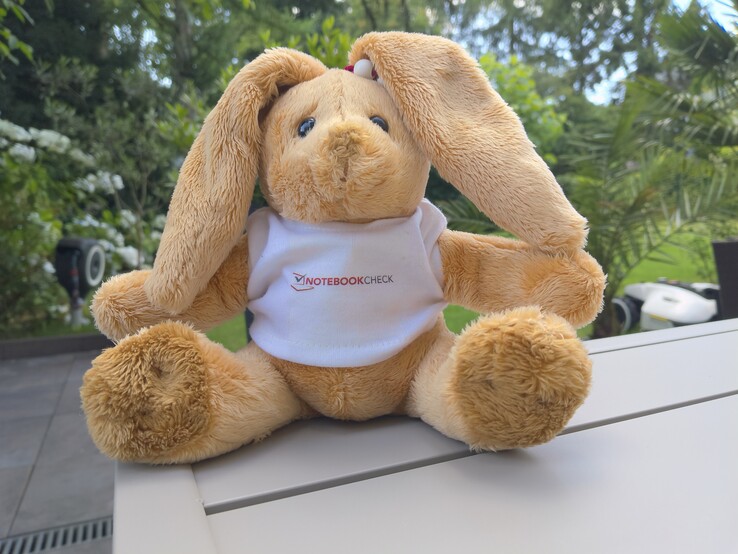
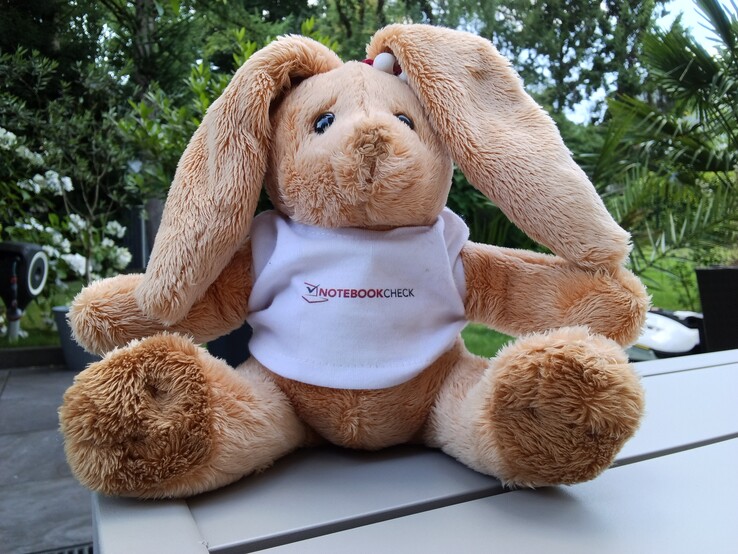

显示屏--串联式 OLED 实现超高亮度
12.2 英寸串联式 OLED 显示屏可提供清晰的视觉效果,而华为 PaperMatte 表面则提供了一种类似纸张的涂层,同时还具有哑光效果。这在户外具有明显的优势。
在纯白色显示屏和环境光传感器激活的情况下,屏幕亮度略高于前代产品。 前代产品.在测试中,华为平板电脑的峰值亮度轻松超过了承诺的 2,000 cd/m²,在缩小白色区域(APL18)和 HDR 播放时均超过了 2,200 cd/m²。
该面板采用高频 PWM 调光,使其相对更容易看清。只有最低亮度还可以再低一些。
| |||||||||||||||||||||||||
Brightness Distribution: 94 %
Center on Battery: 1036 cd/m²
Contrast: ∞:1 (Black: 0 cd/m²)
ΔE ColorChecker Calman: 1.4 | ∀{0.5-29.43 Ø4.78}
ΔE Greyscale Calman: 2.2 | ∀{0.09-98 Ø5}
99.4% sRGB (Calman 2D)
Gamma: 2.22
CCT: 6829 K
| Huawei MatePad Pro 12.2 2025 Tandem OLED, 2800x1840, 12.2" | Acer Iconia X12 AMOLED, 2560x1600, 12.6" | Apple iPad Air 13 2025 IPS, 2732x2048, 12.9" | Samsung Galaxy Tab S10+ Dynamic AMOLED 2X, 2800x1752, 12.4" | |
|---|---|---|---|---|
| Screen | -174% | -23% | -60% | |
| Brightness middle (cd/m²) | 1036 | 378 -64% | 607 -41% | 471 -55% |
| Brightness (cd/m²) | 1039 | 356 -66% | 576 -45% | 473 -54% |
| Brightness Distribution (%) | 94 | 86 -9% | 87 -7% | 97 3% |
| Black Level * (cd/m²) | 0.5 | |||
| Colorchecker dE 2000 * | 1.4 | 7.11 -408% | 1.52 -9% | 3.1 -121% |
| Colorchecker dE 2000 max. * | 2.6 | 10.75 -313% | 3.5 -35% | 5.8 -123% |
| Greyscale dE 2000 * | 2.2 | 6.3 -186% | 2.2 -0% | 2.4 -9% |
| Gamma | 2.22 99% | 2.21 100% | 2.197 100% | 2.06 107% |
| CCT | 6829 95% | 7323 89% | 6929 94% | 6746 96% |
| Contrast (:1) | 1214 |
* ... smaller is better
| Display / APL18 Peak Brightness | |
| Huawei MatePad Pro 12.2 2025 | |
| Display / HDR Peak Brightness | |
| Huawei MatePad Pro 12.2 2025 | |
Screen Flickering / PWM (Pulse-Width Modulation)
| Screen flickering / PWM detected | 120 Hz Amplitude: 17.97 % Secondary Frequency: 1428 Hz | ||
The display backlight flickers at 120 Hz (worst case, e.g., utilizing PWM) . The frequency of 120 Hz is very low, so the flickering may cause eyestrain and headaches after extended use. In comparison: 53 % of all tested devices do not use PWM to dim the display. If PWM was detected, an average of 8142 (minimum: 5 - maximum: 343500) Hz was measured. | |||
Display Response Times
| ↔ Response Time Black to White | ||
|---|---|---|
| 1.41 ms ... rise ↗ and fall ↘ combined | ↗ 0.719 ms rise | |
| ↘ 0.6905 ms fall | ||
| The screen shows very fast response rates in our tests and should be very well suited for fast-paced gaming. In comparison, all tested devices range from 0.1 (minimum) to 240 (maximum) ms. » 7 % of all devices are better. This means that the measured response time is better than the average of all tested devices (20.2 ms). | ||
| ↔ Response Time 50% Grey to 80% Grey | ||
| 0.79 ms ... rise ↗ and fall ↘ combined | ↗ 0.44 ms rise | |
| ↘ 0.351 ms fall | ||
| The screen shows very fast response rates in our tests and should be very well suited for fast-paced gaming. In comparison, all tested devices range from 0.165 (minimum) to 636 (maximum) ms. » 2 % of all devices are better. This means that the measured response time is better than the average of all tested devices (31.7 ms). | ||
华为 MatePad Pro 12.2 (2025) 的其他测量数据
| Networking | |
| Huawei MatePad Pro 12.2 2025 | |
| iperf3 transmit AXE11000 | |
| iperf3 receive AXE11000 | |
| Acer Iconia X12 | |
| iperf3 transmit AXE11000 | |
| iperf3 receive AXE11000 | |
| Apple iPad Air 13 2025 | |
| iperf3 transmit AXE11000 6GHz | |
| iperf3 receive AXE11000 6GHz | |
| Samsung Galaxy Tab S10+ | |
| iperf3 transmit AXE11000 | |
| iperf3 receive AXE11000 | |
| iperf3 transmit AXE11000 6GHz | |
| iperf3 receive AXE11000 6GHz | |
| Average 802.11 a/b/g/n/ac/ax/be | |
| iperf3 transmit AXE11000 | |
| iperf3 receive AXE11000 | |
| iperf3 transmit AXE11000 6GHz | |
| iperf3 receive AXE11000 6GHz | |
| Average of class Tablet | |
| iperf3 transmit AXE11000 | |
| iperf3 receive AXE11000 | |
| iperf3 transmit AXE11000 6GHz | |
| iperf3 receive AXE11000 6GHz | |
| Geekbench AI | |
| Single Precision TensorFlow NNAPI 1.2 | |
| Average of class Tablet (85 - 1140, n=15, last 2 years) | |
| Average HiSilicon Kirin T92 (386 - 402, n=2) | |
| Huawei MatePad Pro 12.2 2025 | |
| Half Precision TensorFlow NNAPI 1.2 | |
| Average of class Tablet (84 - 4545, n=15, last 2 years) | |
| Average HiSilicon Kirin T92 (387 - 404, n=2) | |
| Huawei MatePad Pro 12.2 2025 | |
| Quantized TensorFlow NNAPI 1.2 | |
| Average of class Tablet (130 - 4532, n=15, last 2 years) | |
| Average HiSilicon Kirin T92 (801 - 831, n=2) | |
| Huawei MatePad Pro 12.2 2025 | |
| Jetstream 2 - 2.0 Total Score | |
| Apple iPad Air 13 2025 (Safari 18) | |
| Huawei MatePad Pro 12.2 2025 (Chrome 137, Performance Mode) | |
| Huawei MatePad Pro 12.2 2025 (Chrome 137) | |
| Samsung Galaxy Tab S10+ (Chrome 130) | |
| Average HiSilicon Kirin T92 (129.8 - 194.5, n=4) | |
| Average of class Tablet (22.3 - 395, n=69, last 2 years) | |
| Huawei MatePad Pro 12.2 2025 | Samsung Galaxy Tab S10+ | Average 512 GB UFS 3.1 Flash | Average of class Tablet | |
|---|---|---|---|---|
| AndroBench 3-5 | -22% | -29% | -36% | |
| Sequential Read 256KB (MB/s) | 2110.35 | 3574.3 69% | 1867 ? -12% | 1739 ? -18% |
| Sequential Write 256KB (MB/s) | 1988.5 | 554.67 -72% | 1303 ? -34% | 1295 ? -35% |
| Random Read 4KB (MB/s) | 340.83 | 218.43 -36% | 288 ? -16% | 243 ? -29% |
| Random Write 4KB (MB/s) | 745.32 | 374.09 -50% | 354 ? -53% | 276 ? -63% |
(+) The maximum temperature on the upper side is 37.1 °C / 99 F, compared to the average of 33.7 °C / 93 F, ranging from 20.7 to 53.2 °C for the class Tablet.
(+) The bottom heats up to a maximum of 38.5 °C / 101 F, compared to the average of 33.2 °C / 92 F
(+) In idle usage, the average temperature for the upper side is 28.2 °C / 83 F, compared to the device average of 30 °C / 86 F.
3DMark Steel Nomad Stress Test
| 3DMark | |
| Wild Life Stress Test Stability | |
| Acer Iconia X12 | |
| Huawei MatePad Pro 12.2 2025 | |
| Samsung Galaxy Tab S10+ | |
| Steel Nomad Light Stress Test Stability | |
| Acer Iconia X12 | |
| Huawei MatePad Pro 12.2 2025 | |
| Apple iPad Air 13 2025 | |
| Samsung Galaxy Tab S10+ | |
Huawei MatePad Pro 12.2 2025 audio analysis
(+) | speakers can play relatively loud (86.5 dB)
Bass 100 - 315 Hz
(±) | reduced bass - on average 11.3% lower than median
(±) | linearity of bass is average (8.5% delta to prev. frequency)
Mids 400 - 2000 Hz
(+) | balanced mids - only 3.1% away from median
(+) | mids are linear (3.8% delta to prev. frequency)
Highs 2 - 16 kHz
(+) | balanced highs - only 2.3% away from median
(+) | highs are linear (3.9% delta to prev. frequency)
Overall 100 - 16.000 Hz
(+) | overall sound is linear (9.6% difference to median)
Compared to same class
» 4% of all tested devices in this class were better, 3% similar, 93% worse
» The best had a delta of 7%, average was 21%, worst was 129%
Compared to all devices tested
» 3% of all tested devices were better, 1% similar, 96% worse
» The best had a delta of 4%, average was 24%, worst was 134%
Apple iPad Air 13 2025 audio analysis
(±) | speaker loudness is average but good (77.7 dB)
Bass 100 - 315 Hz
(±) | reduced bass - on average 5.3% lower than median
(±) | linearity of bass is average (13.6% delta to prev. frequency)
Mids 400 - 2000 Hz
(+) | balanced mids - only 3.8% away from median
(+) | mids are linear (6% delta to prev. frequency)
Highs 2 - 16 kHz
(+) | balanced highs - only 2.5% away from median
(±) | linearity of highs is average (7.5% delta to prev. frequency)
Overall 100 - 16.000 Hz
(+) | overall sound is linear (10.7% difference to median)
Compared to same class
» 8% of all tested devices in this class were better, 4% similar, 87% worse
» The best had a delta of 7%, average was 21%, worst was 129%
Compared to all devices tested
» 5% of all tested devices were better, 2% similar, 93% worse
» The best had a delta of 4%, average was 24%, worst was 134%
| Battery runtime - WiFi v1.3 | |
| Huawei MatePad Pro 12.2 2025 | |
| Acer Iconia X12 | |
| Apple iPad Air 13 2025 | |
| Samsung Galaxy Tab S10+ | |
Notebookcheck 总体评分
华为 MatePad Pro 12.2(2025)拥有六年更新保证、画质稳定的 5000 万像素主摄像头和足以满足视频通话需求的前置摄像头,给人留下了深刻印象。亮丽的 12.2 英寸串联式 OLED 显示屏亮度超过 2,200 cd/m²,表面采用磨砂处理,并通过高频 PWM 调光技术使显示效果更加清晰。
Huawei MatePad Pro 12.2 2025
- 07/15/2025 v8
Daniel Schmidt
可能的替代品比较
Transparency
The selection of devices to be reviewed is made by our editorial team. The test sample was provided to the author as a loan by the manufacturer or retailer for the purpose of this review. The lender had no influence on this review, nor did the manufacturer receive a copy of this review before publication. There was no obligation to publish this review. As an independent media company, Notebookcheck is not subjected to the authority of manufacturers, retailers or publishers.
This is how Notebookcheck is testing
Every year, Notebookcheck independently reviews hundreds of laptops and smartphones using standardized procedures to ensure that all results are comparable. We have continuously developed our test methods for around 20 years and set industry standards in the process. In our test labs, high-quality measuring equipment is utilized by experienced technicians and editors. These tests involve a multi-stage validation process. Our complex rating system is based on hundreds of well-founded measurements and benchmarks, which maintains objectivity. Further information on our test methods can be found here.




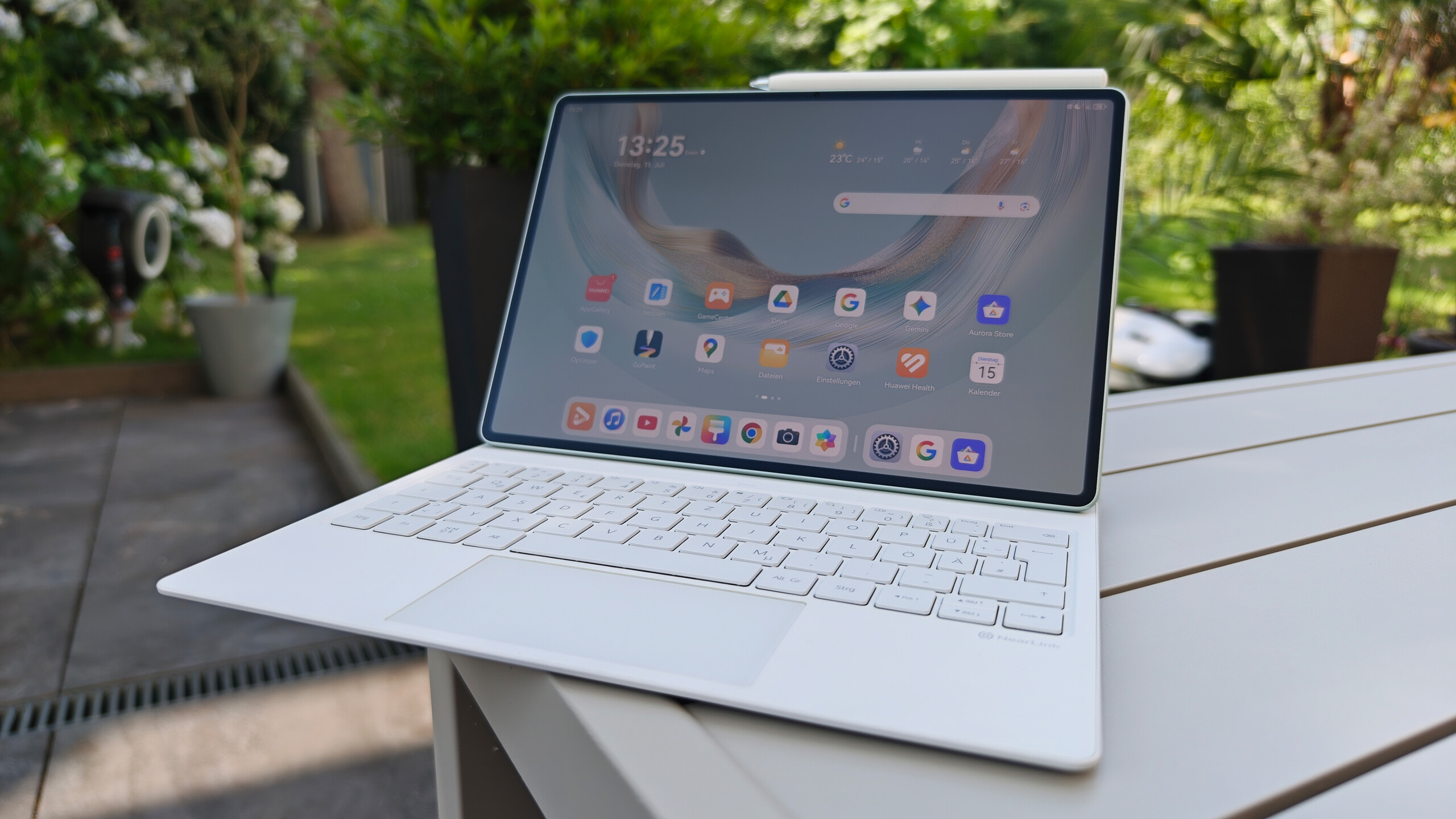

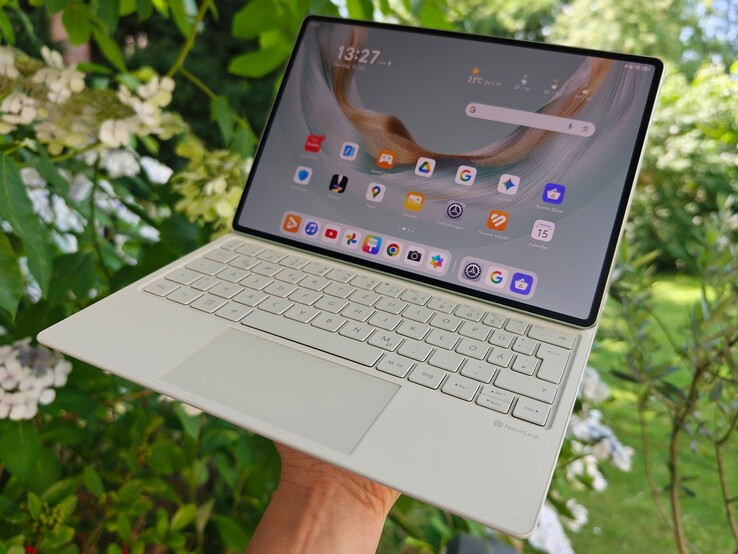









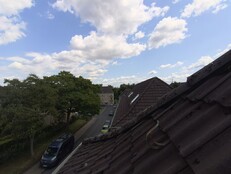



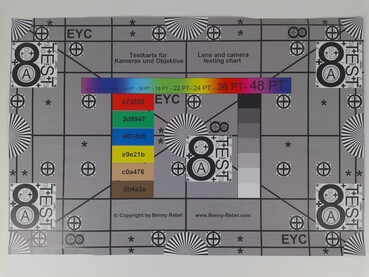
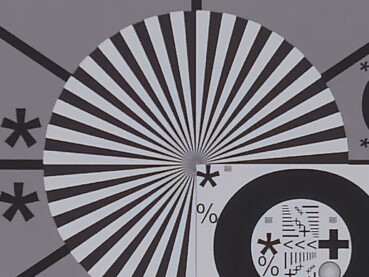
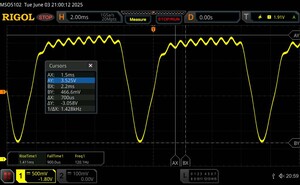
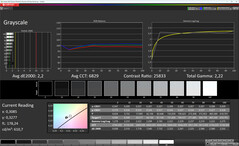
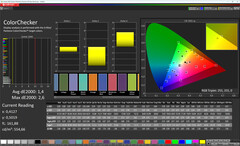
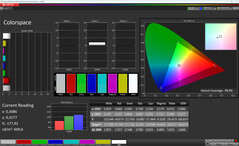
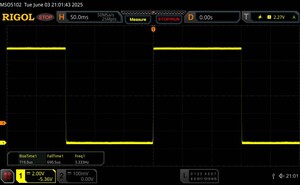
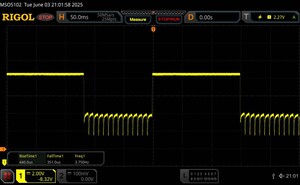
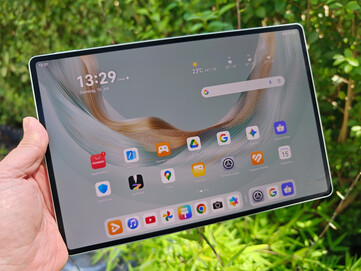
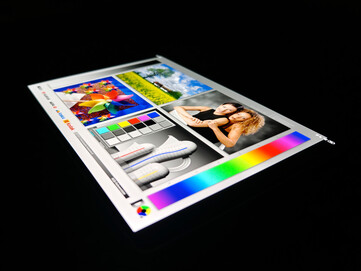
 Total Sustainability Score:
Total Sustainability Score: 